33576
Microcystin-YR solution
10 μg/mL in methanol, analytical standard
Sinónimos:
Algae bloom standard, Biotoxin, Cyanobacterial toxin
Seleccione un Tamaño
Seleccione un Tamaño
About This Item
Productos recomendados
grado
analytical standard
caducidad
limited shelf life, expiry date on the label
concentración
10 μg/mL in methanol
técnicas
HPLC: suitable
gas chromatography (GC): suitable
aplicaciones
environmental
Formato
single component solution
temp. de almacenamiento
−20°C
cadena SMILES
CO[C@@H](Cc1ccccc1)[C@@H](C)\C=C(C)\C=C\[C@@H]2NC(=O)[C@H](CCCNC(N)=N)NC(=O)[C@@H](C)[C@@H](NC(=O)[C@H](Cc3ccc(O)cc3)NC(=O)[C@@H](C)NC(=O)C(=C)N(C)C(=O)CC[C@@H](NC(=O)[C@H]2C)C(O)=O)C(O)=O
InChI
1S/C52H72N10O13/c1-28(25-29(2)41(75-8)27-34-13-10-9-11-14-34)16-21-37-30(3)44(65)59-39(50(71)72)22-23-42(64)62(7)33(6)47(68)56-32(5)46(67)60-40(26-35-17-19-36(63)20-18-35)49(70)61-43(51(73)74)31(4)45(66)58-38(48(69)57-37)15-12-24-55-52(53)54/h9-11,13-14,16-21,25,29-32,37-41,43,63H,6,12,15,22-24,26-27H2,1-5,7-8H3,(H,56,68)(H,57,69)(H,58,66)(H,59,65)(H,60,67)(H,61,70)(H,71,72)(H,73,74)(H4,53,54,55)/b21-16+,28-25+/t29-,30-,31-,32+,37-,38-,39+,40-,41-,43+/m0/s1
Clave InChI
OWHASZQTEFAUJC-GJRPNUFSSA-N
Descripción general
Aplicación
Palabra de señalización
Danger
Frases de peligro
Consejos de prudencia
Clasificaciones de peligro
Acute Tox. 3 Dermal - Acute Tox. 3 Inhalation - Acute Tox. 3 Oral - Flam. Liq. 2 - STOT SE 1
Órganos de actuación
Eyes,Central nervous system
Código de clase de almacenamiento
3 - Flammable liquids
Clase de riesgo para el agua (WGK)
WGK 2
Punto de inflamabilidad (°F)
51.8 °F
Punto de inflamabilidad (°C)
11 °C
Equipo de protección personal
Eyeshields, Faceshields, Gloves
Elija entre una de las versiones más recientes:
¿Ya tiene este producto?
Encuentre la documentación para los productos que ha comprado recientemente en la Biblioteca de documentos.
Active Filters
Nuestro equipo de científicos tiene experiencia en todas las áreas de investigación: Ciencias de la vida, Ciencia de los materiales, Síntesis química, Cromatografía, Analítica y muchas otras.
Póngase en contacto con el Servicio técnico
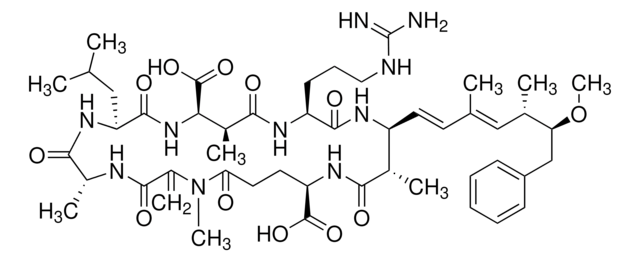
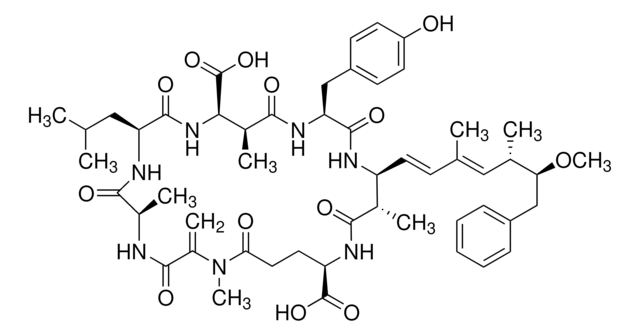
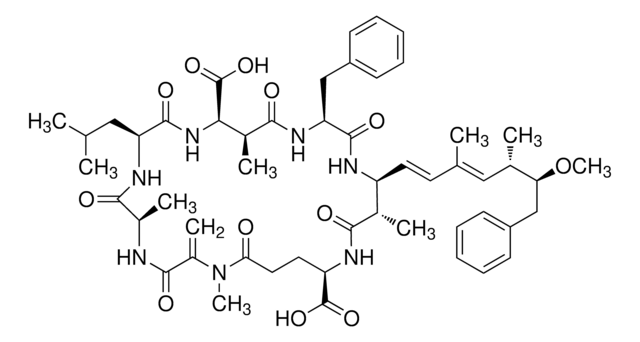
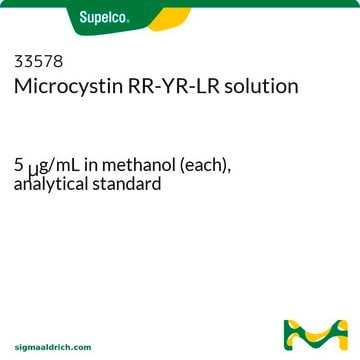
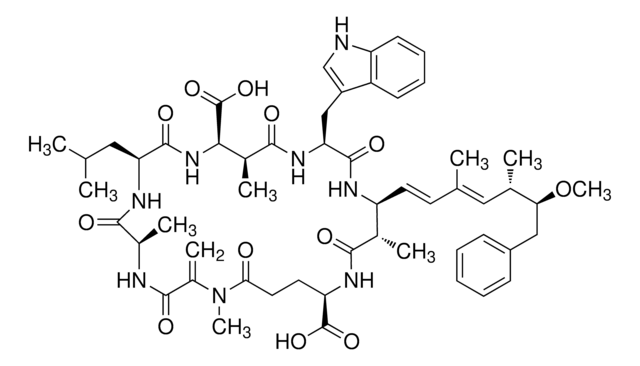
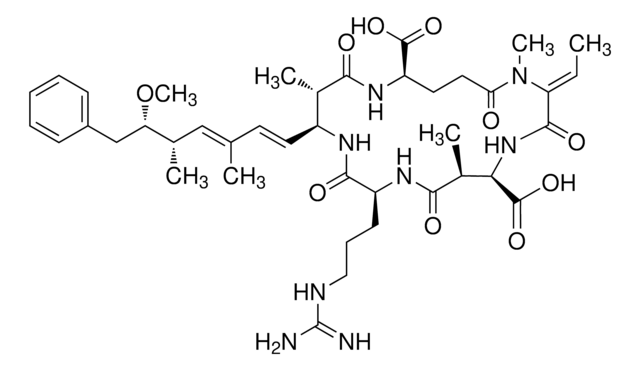
![[D-Asp3, E-Dhb7]-Microcystin-RR solution 10 μg/mL in methanol, analytical standard](/deepweb/assets/sigmaaldrich/product/structures/203/719/224e0302-f5e0-4fab-a938-0e510026718d/640/224e0302-f5e0-4fab-a938-0e510026718d.png)



